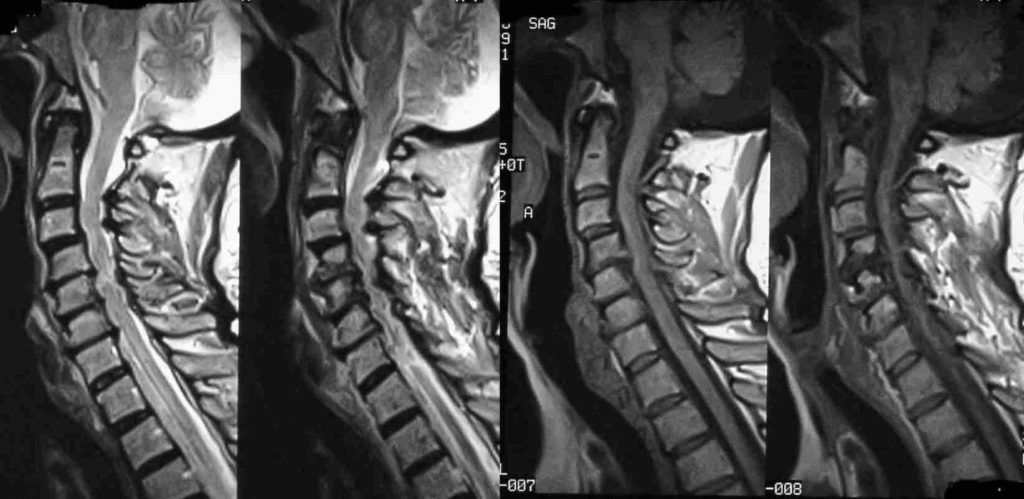A Guide to Central Canal Stenosis


Central canal stenosis is a condition characterised by narrowing of the central canal within the spine. The canal is a pathway in the spine that holds nerve roots and spinal cord. Spinal stenosis may occur in any region of the spine. However, the neck or (cervical spine) or lower back (lumbar spine) is most commonly affected.
Stenosis usually develops due to another degenerative spinal disorder such as bulging disc or a herniated disc. It may also result from a condition that leads to disturbance in alignment of a fragment of spine.
Pain Relief
The best way to find relief from pain is to let an experienced physician diagnose the exact cause of stenosis. Thereafter, he/she will assess the condition and outline the best treatment options available. Most patients may show spinal stenosis signs on a CT scan or an MRI. However, they do not show any physical symptoms. This is not good because the condition will worsen gradually over the passage of time.
Symptoms of central stenosis may vary depending on the exact location of stenosis and the nerves that are affected. Some individuals are born with smaller spinal canal. This may lead to development of stenosis over time. However, in most cases, stenosis occurs due to narrowing of open space in the spine.
The most common causes of spinal stenosis may include the following listed below:
Herniated Disks
The process of natural ageing can dry out soft cushions existing between vertebrae. These act as shock absorbers. Some of this soft material may leak from cracks formed in exteriors of disk and put pressure on the nerves or spinal cord.
Overgrowth of Bone
Osteoarthritis results in wear and tear damage on spinal bones. This may cause formation of bone spurs that may branch out into the spinal canal. Sometimes, a bone disease known as Paget’s disease commonly affecting adults may result in overgrowth of bone within the spine.
Thickened Ligaments
The bones of the spine are held together by tough cords. These tend to get hard and thickened over time. The thickness of ligaments forces them to swell into the spinal canal.
Spinal Injuries
Fractures and dislocations of the vertebrae caused by car accidents and other types of trauma can damage spinal canal contents.
Tumors
Sometimes formation of abnormal growths within the spinal cord and membranes covering the cord can result in stenosis. These growths can also be formed inside the space between vertebrae and spinal cord. However, these growths are rare and can be identified on spine imaging using CT or MRI.
Swelling Post Surgery
After a back surgery, patients may suffer from swelling of neighboring tissue. This places pressure on nerves or spinal cord.
Diagnosis
A number of spinal conditions may present similar symptoms. Hence, it is important to get an accurate diagnosis through a thorough diagnostic testing and medical examination. The doctor may perform one or many of the tests listed below to ensure the accurate cause of pain has been determined:
– Detailed representation of complete medical history of patient
– Physical exam for testing reflexes and strength
– MRI
– X-ray
– CT scan
– Blood tests
– Bone scan
When left untreated, severe spinal stenosis in rare cases may get worse and progress and cause permanent:
– Balance problems
– Numbness
– Incontinence
– Weakness
– Paralysis
Treatment Options
Once an accurate diagnosis of central canal stenosis is done, the doctor develops a detailed treatment plan appropriate for your condition. In most cases, nonsurgical treatments such as lifestyle changes and physical therapy under the guidance of a professional can effectively alleviate central stenosis symptoms. For instance, mobility scooters can be used to move around before a definitive treatment is undertaken. There are cases where treatment may include surgery.
These are mainly minimally invasive outpatient procedures performed by experienced surgeons. Minimally invasive approach will decrease risk of infection and other complications in patients. This also reduces recovery time significantly.
Decompression or stabilization surgical process may also be recommended. This entirely depends on the exact cause of stenosis and its severity. The surgery can help alleviate symptoms and ensure relief from chronic back or neck pain.
